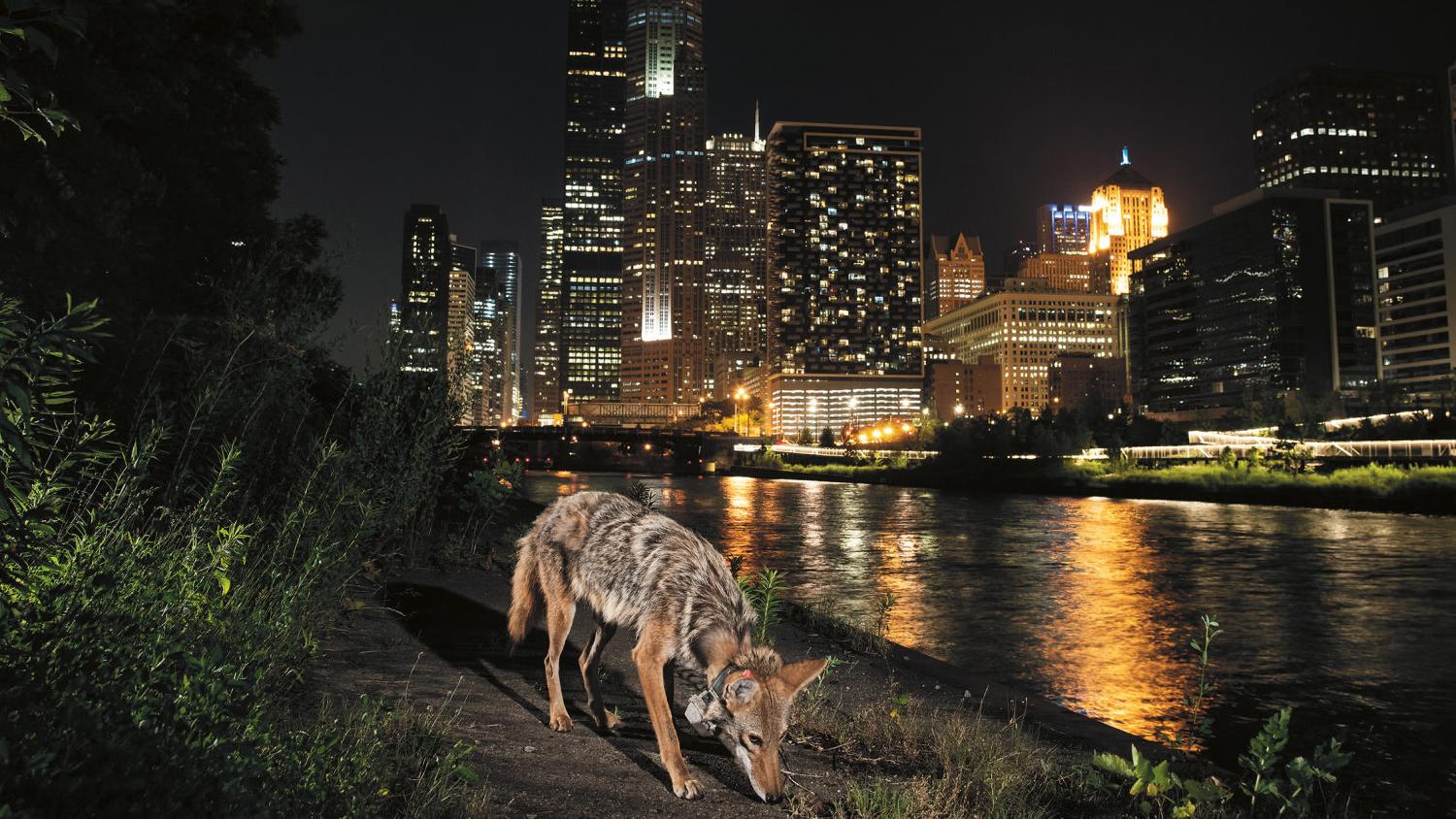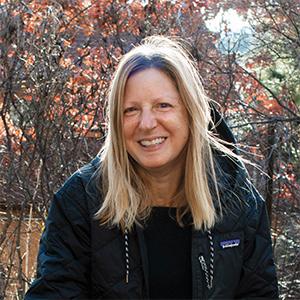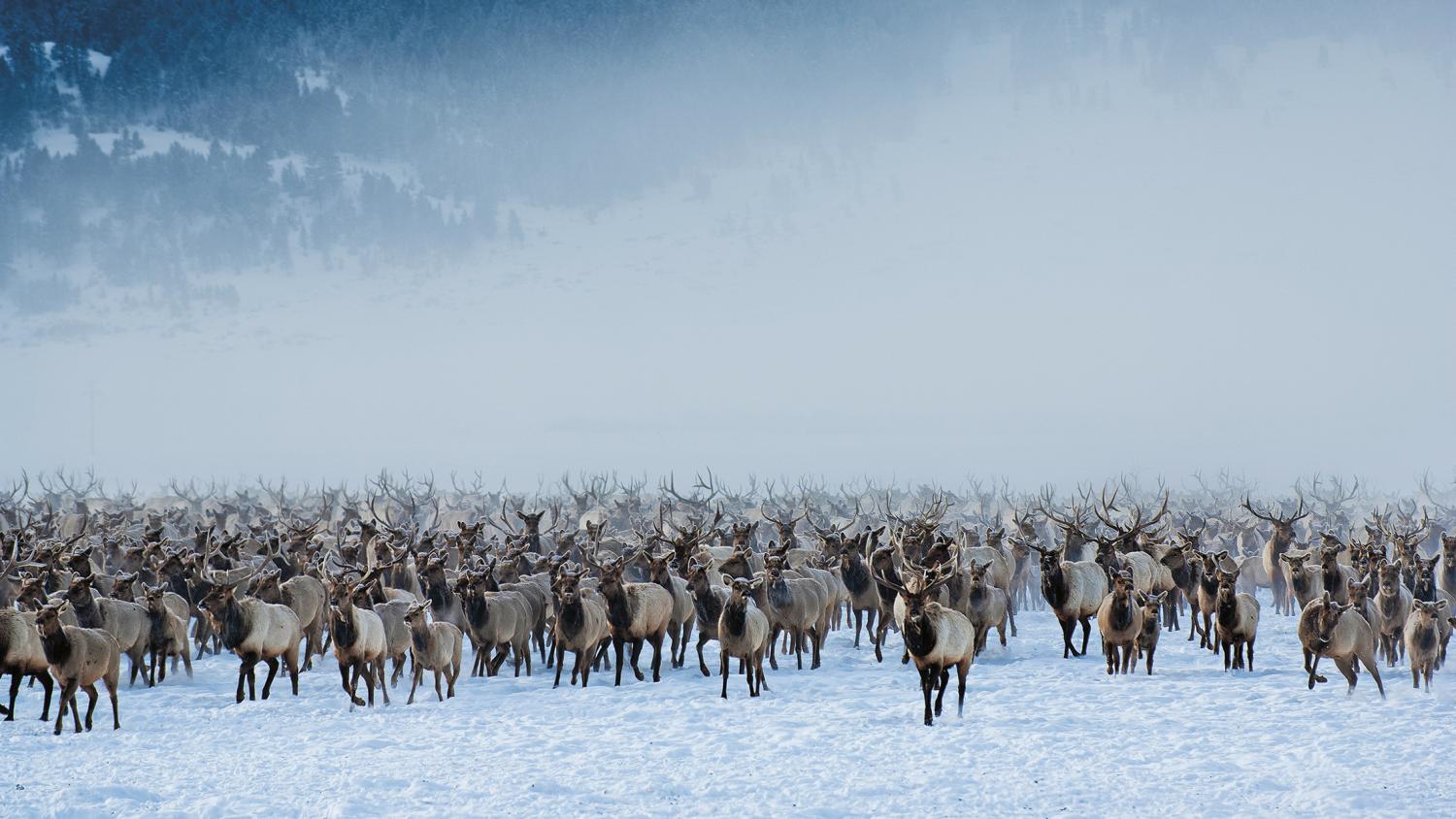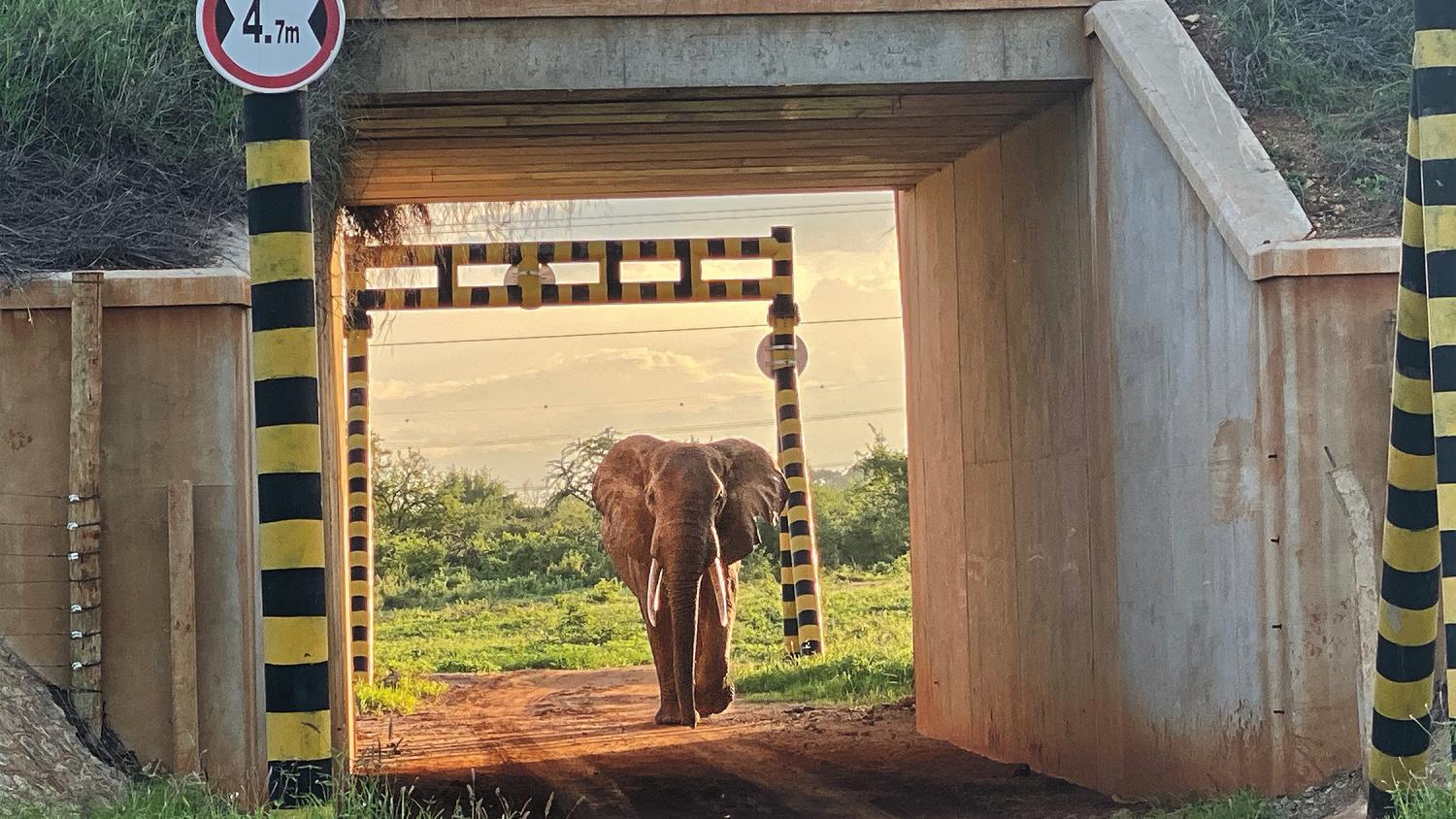Roam if you want to. Unless you’re a wild animal

A coyote wanders through urban parkland in Chicago at night. It was a coyote in New York's Central Park that first got Hillary M. Rosner interested in how wildlife roams from place to place—and the human-made obstacles that thwart them. This coyote, which was being tracked with a radio collar, was struck by a car and killed just months after this photo was taken. Photo by Corey Arnold.
Hillary M. Rosner was a young editor with the Village Voice in the 1990s when she read about a coyote living in Central Park.
Nowadays, that’s not quite so special—the park is home to resident coyotes who prowl the improbably green space at the heart of Manhattan. But what fascinated Rosner was their improbable journey—how the animals successfully navigated the urban jungle, and why they chose to do so.
“That idea—just wondering how this coyote navigated these concrete canyons to get to the park—really stuck with me,” said Rosner (MEnvSt’06), an assistant teaching professor of journalism at the College of Communication, Media, Design and Information and associate director of its Center for Environmental Journalism. “As I got more into environmental and science journalism, the stories that most moved me were in some way about animals whose lives were changed because of human infrastructure.”

Hillary M. Rosner
That curiosity has culminated in a new book, Roam: Wild Animals and the Race to Repair Our Fractured World, out this month from Patagonia. In it, she draws upon a career of environmental journalism to share stories of the struggles animals face in overcoming human-made boundaries.
Restoring empathy
Her goal is to encourage readers to abandon a human-centered view of the world in favor of one that demonstrates our interconnectedness with the planet, while learning to view other species with empathy and compassion.
The connections she explores in the book are both literal—for example, creatures needing to get from one point to another—and more abstract, such as how animals connect to an ecosystem to affect its resilience and adaptability. “And it’s about showing how human infrastructure presents a barrier to this idea of connectivity for all these other species,” she said. The book further spells out the ecological consequences of a world where wild animals cannot roam—an inability to spread plant life, less genetic diversity—threatening species’ adaptability and survival—and the extinction of charismatic species.
If that sounds dire, Rosner will be the first to tell you there’s real urgency behind the topic. Her work took her around the world to see the obstacles humans have created for wildlife. In Kenya, as more land becomes privately owned, more fences are going up, blocking long-held migration routes. Closer to home, Donald Trump’s funding freeze has canceled wildlife crossings along U.S. highways.
“If we continue to act as though we are the only species on the planet, it’s going to become self-fulfilling.”
Hillary M. Rosner (MEnvSt’06)
“I talk about a lot of bad things that are going on, but the book is about solutions—the race to repair our fractured world,” Rosner said. “It’s about people all across the world doing incredible work and devoting their lives to reconnecting the planet for other species. And I think that is hopeful.”
Rosner’s work has appeared in some of the most influential news outlets in the country—The New York Times, National Geographic, Scientific American, The Atlantic—following her pivot to environmental reporting, which owes quite a bit to her graduate work in environmental studies at CU Boulder, as well as a Ted Scripps environmental journalism fellowship.
“I took an amazing biogeography course during my Scripps fellowship, which really helped shape my thinking around this project, in terms of species movement and the role humans have in shaping that,” said Rosner, who today oversees the Scripps program as part of her work with CEJ. Her work also was influenced by fellowships from Knight Science Journalism at MIT and the National Science Foundation.
Barriers beyond borders, highways
As you might expect from someone with such curiosity for the natural world, Rosner took the most enjoyment from how much she learned about the world through her reporting. A concept she particularly enjoyed exploring was anthropogenic resistance—the invisible ways humans impede animal movement.
“For instance, you may have a physically passable route for a bear, but you have a lot of hikers who recreate in that area, so it won’t go there,” she said. “We more readily think of border walls or highways, but humans have created all sorts of hidden barriers to animal movement that we don’t often think about.”
Her book is a call to action that we need to start thinking otherwise—and quickly. A key theme in Roam is one of empathy, as she invites readers to bring a different perspective to how they, too, move through the world.
“The idea of empathy was not an idea I was thinking about when I started this project,” Rosner said. “When I look around, it’s clear to me that empathy is lacking across the board right now—but perhaps if we can learn to see other species with empathy, it will help us see one another with empathy, also.”
There’s also a more pragmatic reason to take Rosner’s work seriously. Like it or not, those same connections between wild animals and the natural world also link us to the environment.
“We must better understand and appreciate how intimately we are connected to nature,” she said. “I mean, I say it in the book: If we continue to act as though we are the only species on the planet, it’s going to become self-fulfilling. That’s not a world we’ll want to live in, or be able to live in.”
Roam is available for limited release now, and will officially be available at bookstores and online Oct. 28.

A herd of elk at their winter refuge outside Grand Teton National Park, in Wyoming. Photo by Florian Schulz.

Kenya's major highways and railways include underpasses to allow elephants to navigate human infrastructure. Photo by Richard Moller.
Joe Arney covers research and general news for the college.

